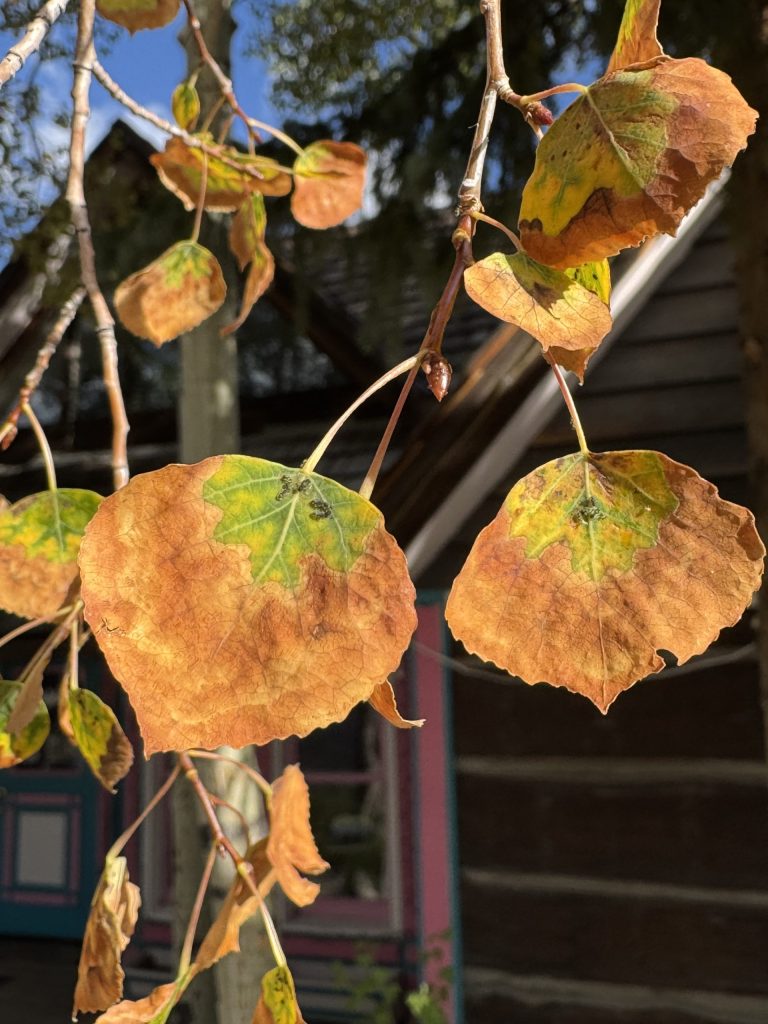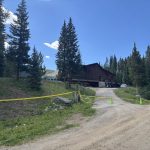Some trees are already turning yellow in Colorado’s mountains. Here’s why.
Despite drought conditions drying out aspen leaves, Colorado State Forest Service entomologist Dan West says the fall foliage this year will still produce ‘a good show’

Glenn Schutz/Courtesy photo
Colorado State Forest Service entomologist Dan West says the first reports of yellowing aspen leaves started in mid-August.
By late last week, as sightings of possible fall foliage continued across the High Country, West said a half-dozen reporters were blowing his phone up, all with the same question: “Is autumn starting early in Colorado?”
West — who said that friends sometimes jokingly refer to him as “Dr. Aspen” — is the go-to guy at the Colorado State Forest Service for questions about aspen health. That also makes him the go-to guy for questions about Colorado’s fall foliage.
Having spent late summers over the past decade flying over all of Colorado to observe forest health ahead of leaf-peeping season, West said he was skeptical that the reports of yellowing leaves popping up across the mountains were true fall colors.
So, he drove up to Summit and Eagle counties this past weekend to find out for himself.
“I wandered through some of these mountain towns trying to figure out, ‘How do things look?'” West said.
What West found confirmed his suspicions. While some aspen leaves appear to be changing color, he said that it is more a response to the drought than it is the aspen trees transitioning to autumn.
Stressed by the severe drought conditions across the High Country this summer and a poor snowpack last winter, West said aspen trees are showing signs of “marginal necrosis,” where the edges of leaves dry out, sometimes yellowing slightly as they turn brown.

From a distance, aspen leaves right now may appear “yellow,” West said. But, upon closer inspection, he said the leaves are barely holding any color, aside from brown, and what remains is a slightly yellow or light-green color.
“It’s no different than a house plant,” West said. “If you didn’t water your house plant in the middle of winter, you wouldn’t be like ‘Oh my gosh, fall colors!'”
The process that creates fall colors hasn’t started yet in Colorado, West said. But despite the drought stressing aspens across the Western Slope, he said, “we’re definitely going to get a good show.”
Along the Interstate 70 mountain corridor, West said he expects that fall colors will peak about a week earlier than normal — around the third or last week of September. In northern parts of the state, he said it could peak closer to the second week of September.
Fall colors occur when trees, responding to lessening daylight and colder temperatures, stop producing chlorophyll, the green pigment that dominates leaves during spring and summer, enabling photosynthesis, West said. When the chlorophyll production dies out, other yellow and red pigments in the leaves become visible, creating the stunning colors of the fall foliage.
While stressed aspen trees are likely to drop their dried leaves early, West said he has also seen plenty of healthy aspen stands that have shown growth over the summer and have canopies of green leaves that could soon turn a striking golden color. He said he expects the colors to be more muted, with fewer vibrant oranges and reds, due to the drought this year, but nonetheless beautiful.
In particular, West said that the aspen trees on the Front Range near Idaho Springs appeared to be healthier than many places in the mountains and there are also large swathes of healthy aspen on the east side of Vail and up near Steamboat Springs. He said the drought conditions tend to get worse further west along the I-70 corridor, but there will still be autumn colors throughout the mountains.
“If one drainage doesn’t look so great, continue onto the next because it does appear some stands are doing better than others,” West said.
The rain the High Country received this week will help hydrate the aspen trees, allowing them to retain green leaves that might otherwise turn brown and fall off before autumn, West said. He also noted that the 30-day forecast shows the potential for above-average temperatures and below-average precipitation.
That forecast shows few chances of frost that could cause trees to drop their leaves early, West said. It also shows plenty of chances for sunshine, which he said helps burn the chlorophyll in the leaves, revealing the fall colors.
“We’re getting to the season. Starbucks is making pumpkin spice lattes. I’m hearing people say it’s sweater weather all of a sudden. We’re a couple weeks away from the fall foliage, but it’s time to start making plans,” West said. “What a magical season in Colorado.”

Support Local Journalism

Support Local Journalism
As a Summit Daily News reader, you make our work possible.
Summit Daily is embarking on a multiyear project to digitize its archives going back to 1989 and make them available to the public in partnership with the Colorado Historic Newspapers Collection. The full project is expected to cost about $165,000. All donations made in 2023 will go directly toward this project.
Every contribution, no matter the size, will make a difference.







